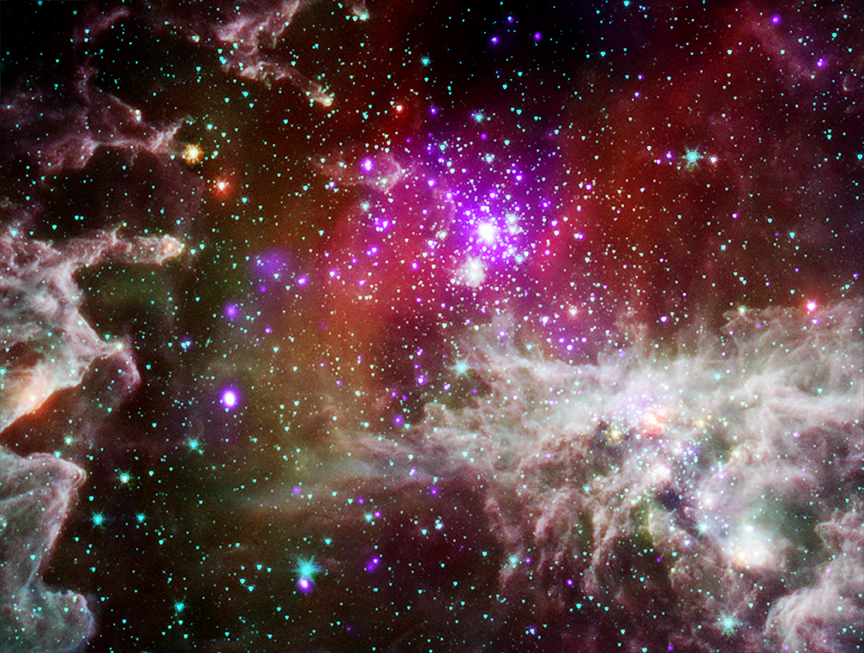A Summer of Sleuthing Around Hot Data
October is American Archives Month—a time to celebrate the importance of archives across the country. In honor of Archives Month, we're participating in a pan-Smithsonian blogathon. Throughout October we, and other blogs from across the Smithsonian, will be blogging about Chandra's rich archive of astronomical data, issues, and behind-the-scenes projects.
----------------------------------------------------------------------------------------------------------------------------------------------------------
This past summer, I interned in the Chandra Education and Public Outreach department at the Smithsonian Astrophysical Observatory (SAO), where I spent several months sleuthing around the Chandra data archives as part of an on-going Astronomy Visualization Metadata (AVM) tagging project http://www.virtualastronomy.org/. AVM is data embedded into each image of astronomical objects that includes information such as the objects coordinates, the instrument and instrument settings used for capturing the image, and a description of the image. The goal of the project is to tag all the press release images from the Chandra X-ray telescope with metadata.
Since each press release image is unique, I had to play the detective and search through the Chandra data archives to locate and add the most accurate information to each image. I didn't have a strong astronomy background, so I did a lot of research about each image and the phenomenon it captures. I always started with the Chandra website http://chandra.si.edu/ and ChaSer http://cda.harvard.edu/chaser/ (a web interface to the Chandra Data Archive), two extensive resources that often already had a lot of the information I needed.
Since the Chandra press releases sometimes feature images from other telescopes and observatories, I also had the opportunity to scour through a variety of other websites and digital archives, including the Hubble Space Telescope, the National Radio Astronomy Observatory, and the National Optical Astronomy Observatory. I was particularly on the look out for FITS files, files containing scientific data that can be used to identify object coordinates. The sleuthing work was my favorite part of the tagging process and it was both exciting and satisfying to discover and compile crucial data about images.
By tagging the press release images with data from the archives, this project ensures that images can always be identified precisely, whether or not they are accompanied by their press release text. In addition, images tagged with metadata can be easily searched for specific characteristics, such as the coordinates of the object or an image that combines data from multiple telescopes. The object coordinates embedded into each image allow anyone to locate the object in the sky, using programs such as Microsoft's World Wide Telescope, and explore the relationship between different objects.
The AVM tagging project at SAO highlights the depth and breadth of the Chandra Data Archives and other astronomical archives around the world. I am so excited to be a part of the effort to make this crucial information universally available and accessible in today's digital age!
-Jessica Brodsky
Please note this is a moderated blog. No pornography, spam, profanity or discriminatory remarks are allowed. No personal attacks are allowed. Users should stay on topic to keep it relevant for the readers.
Read the privacy statement

